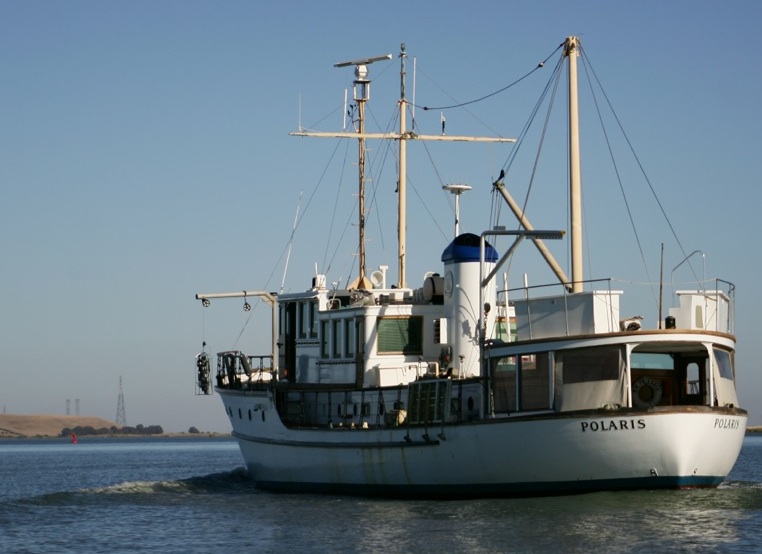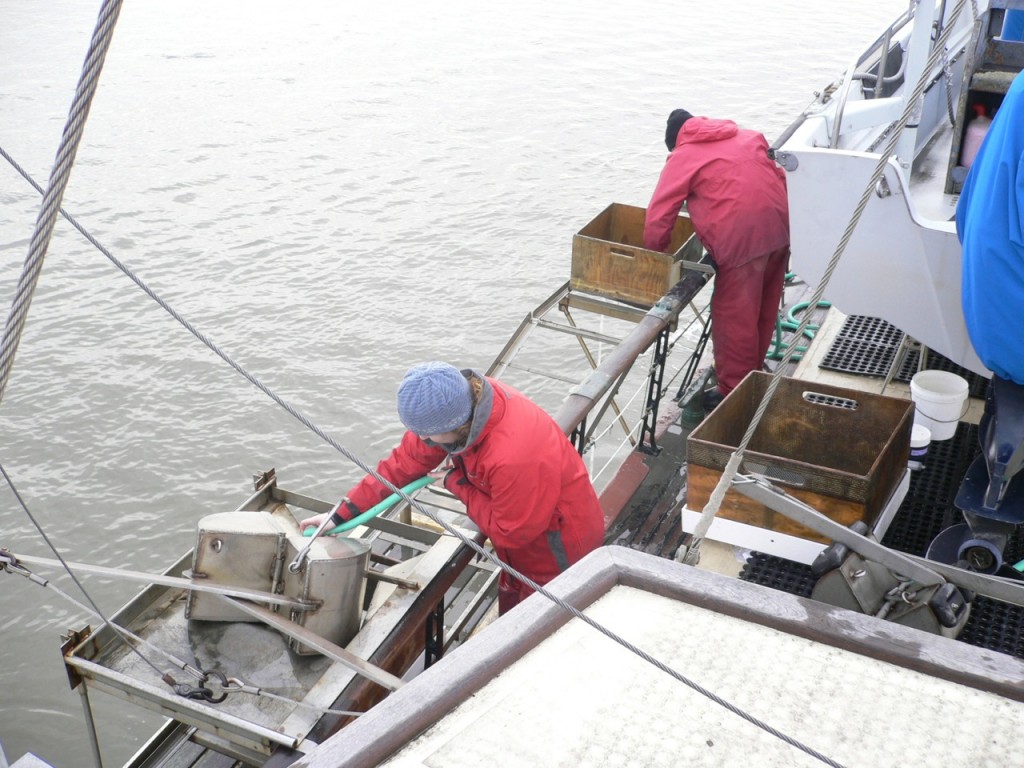By Ariel Rubissow Okamoto
USGS scientists headed up river this June to see whether two Asian clams had also headed upstream with the drought. When there’s less fresh water flowing out to sea, salty ocean water intrudes inland, and changes the distribution of these pesky invertebrates. Potamocorbula like it saltier than Corbicula, and usually hang out in the Suisun Bay region. But scientists suspect drought conditions may have changed all that, and with it, how and when the contaminant selenium gets cycled through the estuarine food web via the clams.

“If there’s a broader distribution of Potamocorbula, then we could potentially see an increased risk of exposure in predators because these clams are smaller and easier to eat, and accumulate more selenium, than Corbicula,”says the U.S. Geological Survey’s Robin Stewart.
When diving ducks, sturgeon, and splittail eat the clams, the selenium can cause reproductive problems and deformities. Stewart hasn’t found any deformed split tail this year, but in prior drought years they’ve turned up at the pumps — although no one knows if the cause was selenium exposure or something else. Based on 17 years of monitoring — the results of which Stewart and her colleagues published last October in the Marine Ecology Progress Series — she sees a correlation between low flows and higher selenium in clams. What’s interesting though is when over the course of the year you see these spikes.
“It’s not just the amount of dryness, but the timing of the dry period that is important when it comes to selenium,” says Stewart. “Typically there’s a mantra that selenium concentrations are higher in the fall than in the spring. But during prolonged periods of low flow we’ve seen high concentrations of selenium continuing through spring. This means fish and birds ready to spawn or nest are exposed during the most sensitive time.


Stewart offers some rough baselines for managers: when spring fresh water flows are below 200 cubic meters persecond, selenium concentrations may range between 10-16 micrograms pergram – a range that is at the risky level. The good news is selenium doesn’t hang around. “It’s leaky, lost quickly from the tissues of organisms. It only gets high when animals are eating a high selenium food source like the clams,” says Stewart. ARO
Influence of estuarine processes on spatiotemporal variation in bioavailable selenium – Stewart et al. MEPS 2013